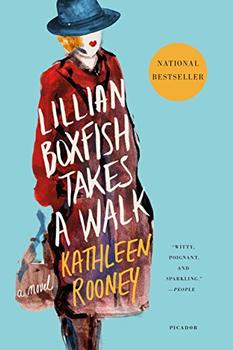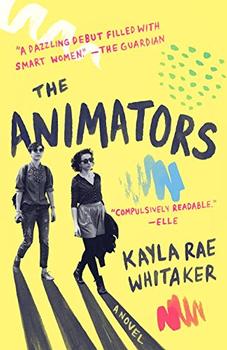Summary | Excerpt | Reading Guide | Reviews | Beyond the book | Read-Alikes | Genres & Themes | Author Bio

Siri Hustvedt's The Blazing World seeks to explore the mystery surrounding the last years of one fictional spurned artist, Harriet Burden. Widow of the infamous art dealer Felix Lord, Burden decides to play a prank on the art world. From 1999-2003, she embarks on a project called Maskings, enlisting three male artists to pose as "pseudonyms" for her, exhibiting her art as their own. The project is meant to both "expose the antifemale bias of the art world" and "uncover the complex workings of human perception and how unconscious ideas about gender, race and celebrity influence a viewer's understanding of a given work of art." And once the gag is pulled off, once the critics and collectors are slavering all over the work and treating the pseudonyms as the newest art world gods, Harriet Burden will "unmask" herself, proving once and for all how ridiculous the whole notion of fame is. Unfortunately for Burden, things go horribly, painfully awry: "I wanted to bite the world bloody, but I have bitten myself, made my own poor tragedy of things."
The fragmented novel is presented as a collection of testimonies, recollections and interviews from a variety of sources, as brought together by a fictional editor. By having this same "editor" use footnotes, Hustvedt explains a series of sciences: Inattentional Blindness (a psychological lack of attention that amounts to the adage "we only see what we want to see"); Phenomenology (the study of the structures of experience and consciousness); Computational Theory of Mind (the theory that the human mind works like a computer), among many others.
Our access to Burden herself comes in the form of journal snippets – writings that range from detailed and luscious descriptions of her works in progress, to wrenching personal analysis, to embittered tirades against any number of "fools." For support, she culls from a lifetime of reading, peppering her entries with morsels from Spinoza, Emily Dickinson, Nietzsche, John Milton, and Soren Kierkegaard. Burden sees herself as connected to a long lineage of female artists who were overshadowed by their male counterparts - Dora Maar (Picasso), Camille Claudel (Rodin), Judith Leyster (whose work was attributed to Frans Hals). One ghost hangs above all these, who at times serves as an obsessional talisman that Burden can't stop fingering. It is that of Margaret Cavendish – "Mad Madge" – the Duchess of Newcastle. Cavendish was a philosopher, a poet and a scientist who wrote prolifically under her own name during a time when any woman hoping to be taken seriously wrote anonymously. Hustvedt's novel's title is borrowed from Burden's final artistic creation, an homage to Mad Madge. The Blazing World is also Cavendish's own masterpiece published in 1666, a utopian romantic satire largely credited with being the forerunner to science fiction.
If you're worried about the fragmentary nature of the novel, don't let it dissuade you. As you progress through the pages, you're likely to discover that the compilation form is the only way for Burden's story to be told. It is through this structure that Hustvedt proves her point, for as you read testimony and accounts from all sides – Burden's co-conspirators, her children, a lover, art critics, various eccentric transients who came through Burden's warehouse, her best friend –you find yourself necessarily scouring for the "truth," and in so doing, you engage the very prejudices and biases and Burden spent her life trying to bring to light. The theme that carries through is a concern with how and why we look at things the way we do. We realize that, alas, this perception is the only truth.
Of course, nowhere is the idea more heightened than in the art world, where the commodification of image means the difference between success and failure, and where artworks accrue merit based on the perceived "value" of the artists themselves. After all, what makes something Art? Then there's that enduring cliché about artists and mental illness: where's the line between genius and insanity? Was Burden a brilliant, visionary artist who sought to expose a system that kept her down, or a paranoid delusional with a victim mentality and Daddy issues? If she was the former, then of course her art must be celebrated and the artist revered as a feminist hero. But what if she was the latter? Just a crazy lady with a persecution complex? Delete from history.
Who decides which story is true? You do.
Siri Hustvedt has written a superb, important, and wildly engrossing novel. I have only just finished the last page and I already miss the characters in that blazing world as I would miss dear friends. You must read this book.
![]() This review was originally published in The BookBrowse Review in March 2014, and has been updated for the
November 2014 edition.
Click here to go to this issue.
This review was originally published in The BookBrowse Review in March 2014, and has been updated for the
November 2014 edition.
Click here to go to this issue.

If you liked The Blazing World, try these:

by Kathleen Rooney
Published 2018
A love letter to city life, however shiny or sleazy, Lillian Boxfish Takes a Walk by Kathleen Rooney paints a portrait of a remarkable woman across the canvas of a changing America: from the Jazz Age to the onset of the AIDS epidemic; the Great Depression to the birth of hip-hop.

by Kayla Rae Whitaker
Published 2017
A funny, heartbreaking novel of friendship, art, and trauma, The Animators is about the secrets we keep and the burdens we shed on the road to adulthood.
Your guide toexceptional books
BookBrowse seeks out and recommends the best in contemporary fiction and nonfiction—books that not only engage and entertain but also deepen our understanding of ourselves and the world around us.